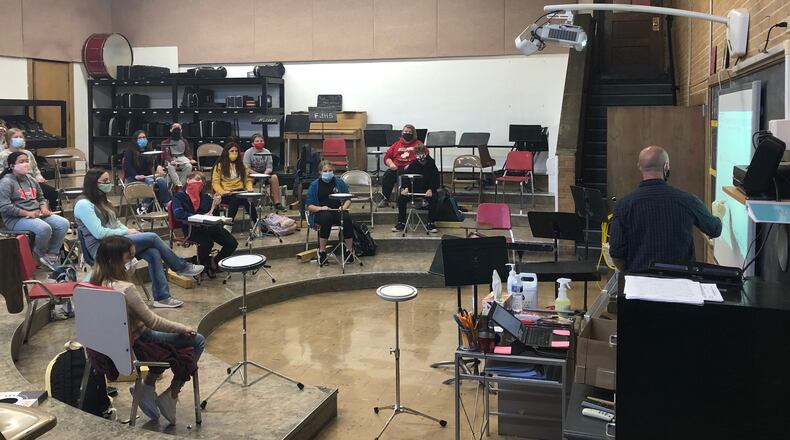The Ohio Department of Education’s own strategic plan says the state should “move toward a varied system of assessments that allows students to demonstrate academic competency and mastery in ways beyond state standardized tests.”
The Urban Network group that wrote the new report card proposal says scores in tested subjects reflect only a fraction of what schools do, adding that Ohio’s strategic plan lays out the 10 strategies schools are supposed to follow.
“It’s just that simple. We have a plan, so we should measure it to see how well the plan is being implemented,” said Lorain City Schools Assistant Superintendent Ross May, who helped lead the Urban Network plan. “We think (the state plan) makes a lot of sense and lends itself well to measurement … rather than just a report card based on state tests.”
Ohio’s strategic plan for schools puts four domains on equal footing — foundational academics like English and math, other subjects such as science and the arts, social-emotional learning (including decision-making), and leadership/reasoning, which includes problem-solving and creativity.
The current report card largely measures only the first of those four domains, via test scores. As the Urban Network and many others have pointed out, the results of those tests have traditionally mirrored the wealth or poverty of each community — conflicting with the state’s push for equity in education.
The Urban Network proposal suggests measurements for the state’s 10 strategies.
For example, Strategy 1 is about hiring more highly effective teachers and supporting them. The proposal suggests measuring that via teacher evaluation data, data on whether high-quality teachers are leaving schools, plus data that’s already on the report card, such as the percentage of teachers working in a subject for which they’re not licensed.
State test scores would still be part of the report card, under the “accountability” piece of the 10 strategies. But the network suggests pairing test scores with other measures of school quality — for example, how many arts classes or extracurriculars does a school offer, and what percentage of students participate?
Strategy 7, on school climate and “meeting the needs of the whole child” would be measured via things like the ratio of nurses and counselors per student, student chronic absenteeism, plus school discipline data on suspensions.
May said creating a report card is a challenge of “threading the needle” between good robust measures, and enough simplicity so everyone understands it. Another member of the Urban Network group, Canton teachers union President Paul Palomba, said their proposal does that.
“(It asks) how are we educating the child holistically, what opportunities do students have, how are we meeting their emotional needs, how are they exposed to the arts and extracurriculars, what do we know about the teachers, what do we know about the principals?” Palomba said. “Those are simple enough for people to understand. But that’s what we’re not doing (currently).”
Earlier this month, state Rep. Don Jones helped introduce House Bill 200 to revamp the K-12 state report card. The bill would remove schools’ overall rating, replace the A-F letter-grade system, stop grading the “Prepared for Success” high school component, and soften some scoring rules. But most of the core report card structure would stay the same.
Jones said he likes the Urban Network Plan, but he called it a huge overhaul that could be considered in the coming years after HB 200 is resolved.
“We said, let’s get the low-hanging fruit — get the stuff fixed that we don’t like about the current report card before we try to move to something that is 100% different,” Jones said.
Meanwhile state Sen. Andrew Brenner, chair of the Senate Education Committee, introduced Senate Bill 145 last week. Brenner was meeting with education stakeholders about his bill Friday. The Legislative Service Commission has not yet published an analysis of the provisions of Brenner’s 156-page bill.
The Ohio School Boards Association said it supports “the work and dedication” of the Urban Network to improve and “fundamentally change” Ohio’s report card. But OSBA is also focused on House Bill 200.
“House Bill 200 provides an immediate fix to the shortcomings and flaws with our current report card system and can be implemented in time for the next school year,” said Will Schwartz, deputy director of legislative services for OSBA. “The Urban Network proposal represents a long-term solution for structural change.”
About the Author

